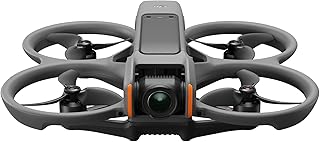DJI Drones: The Ultimate Guide
Introduction
DJI, a leading manufacturer of consumer and professional drones, has revolutionized the way we capture aerial footage and explore the world from above. This guide will provide you with a comprehensive overview of DJI drones, their features, capabilities, and everything you need to know to make an informed decision.
Types of DJI Drones
DJI offers a wide range of drones to suit different needs and budgets:
* Consumer Drones:
* Mavic Series: Compact, foldable, and highly portable drones designed for enthusiasts and casual users.
* Mini Series: Even smaller and lighter drones, perfect for beginners or those seeking ultimate portability.
* Air Series: Mid-range drones with impressive features and performance, suitable for a range of applications.
* Professional Drones:
* Inspire Series: High-performance, cinematic drones equipped with professional cameras and advanced features for filmmaking and aerial photography.
* Matrice Series: Rugged, industrial drones designed for various applications, including inspections, mapping, and surveillance.
Key Features and Capabilities
1. Flight Performance:
* Flight Time: Ranges from around 20 minutes to 45 minutes depending on the model and usage.
* Range: Can reach distances of up to 10 km with the use of a signal booster (depending on regulations and environmental conditions).
* Speed: Most DJI drones can fly at speeds up to 50 km/h, with some models reaching higher speeds.
2. Camera Systems:
* Sensors: DJI drones are equipped with various sensors, including CMOS or CCD image sensors for capturing still images and videos.
* Resolution: Image resolutions range from 12MP to 50MP, while video resolutions can reach up to 5.4K.
* Features: Many drones feature advanced camera features such as HDR, electronic image stabilization (EIS), and 3-axis mechanical gimbals for smooth and stable footage.
3. Flight Control and Safety Features:
* GPS Navigation: Provides precise location information and helps maintain stable flight.
* Obstacle Avoidance: Some models feature advanced obstacle avoidance systems using sensors and algorithms to detect and avoid obstacles.
* Flight Modes: Offer various flight modes, such as Sport Mode for faster flight, ActiveTrack for following subjects, and Tripod Mode for slow and stable filming.
* Return to Home (RTH): Allows the drone to automatically return to its takeoff point if the signal is lost or the battery is low.
4. App Integration and Software:
* DJI Fly App: Provides a user-friendly interface for controlling the drone, accessing camera settings, and reviewing footage.
* DJI Pilot 2 App: Designed for professional users, offering advanced features for flight planning, camera control, and data management.
* DJI Assistant 2: A desktop application for firmware updates, drone configuration, and data analysis.
5. Additional Features:
* Night Flight: Some drones have night flight capabilities with integrated LED lights for nighttime navigation and filming.
* Thermal Imaging: Certain models offer thermal cameras for inspections, search and rescue operations, and other applications.
* Payload Capabilities: Some drones can carry external payloads, such as cameras, sensors, and other equipment.
Choosing the Right DJI Drone
1. Identify Your Needs:
* Budget: DJI drones range in price from a few hundred dollars to several thousand dollars.
* Purpose: What will you be using the drone for? Aerial photography, videography, inspections, or other applications?
* Features: What features are most important to you? Flight time, camera quality, obstacle avoidance, or others?
* Experience Level: Are you a beginner or an experienced drone pilot?
2. Research and Compare Models:
* Read Reviews: Check online reviews and comparisons from reputable sources.
* Watch Videos: See examples of footage captured with different drone models.
* Explore DJI's Website: Visit the DJI website to learn about specific features and specifications.
3. Consider Safety and Regulations:
* Drone Regulations: Be aware of local and national regulations regarding drone operation.
* Flight Safety: Always fly responsibly and within the limits of your abilities.
* Liability Insurance: Consider purchasing drone liability insurance to protect yourself from potential accidents.
4. Accessories and Upgrades:
* Batteries: Purchase extra batteries to extend your flight time.
* SD Cards: Use high-quality SD cards with ample storage space.
* Filters: Neutral density (ND) filters can help reduce light and create cinematic effects.
* Gimbal Protectors: Protect your drone's camera gimbal from damage.
* Propeller Guards: Provide added protection for the propellers.
Conclusion
DJI drones offer incredible possibilities for capturing stunning aerial footage, exploring new perspectives, and enhancing various industries. By understanding the different drone models, features, and regulations, you can choose the right DJI drone for your needs and enjoy the world of aerial exploration.


